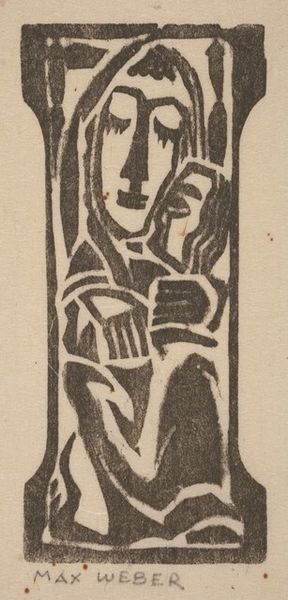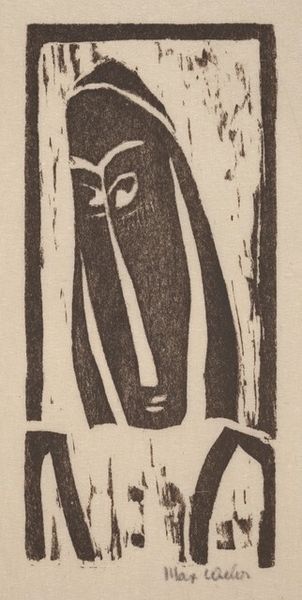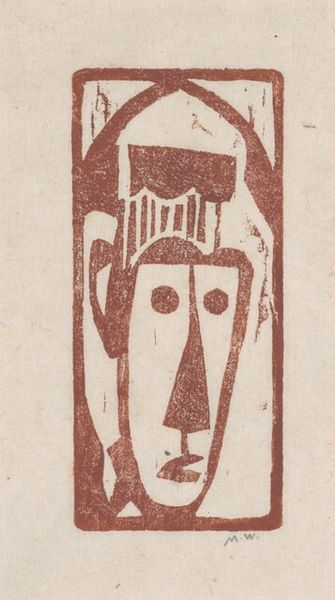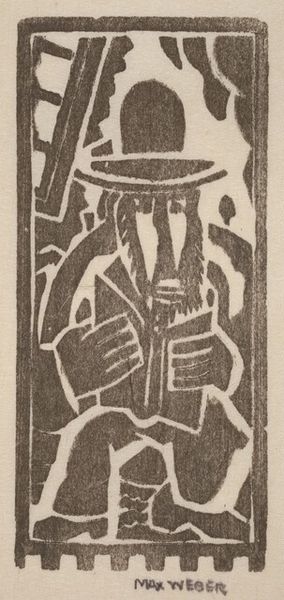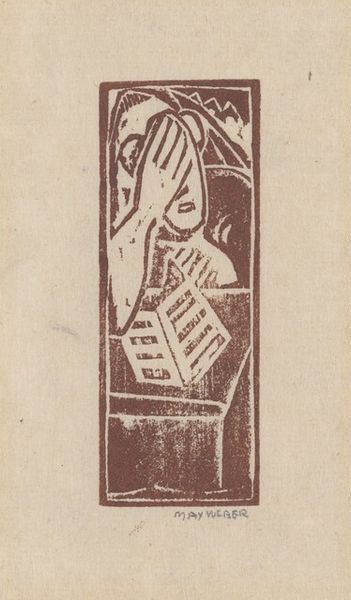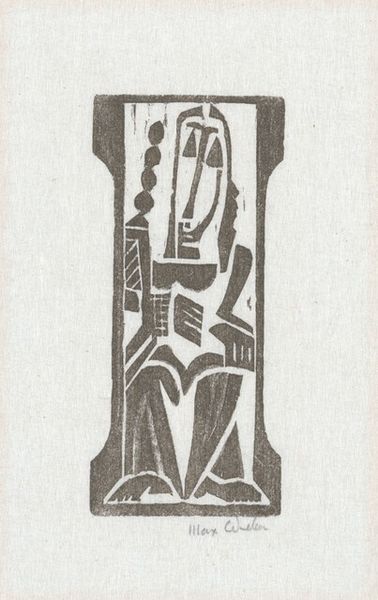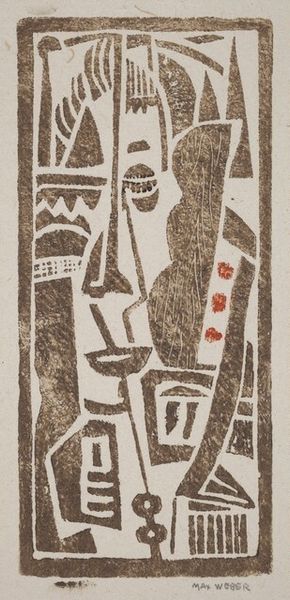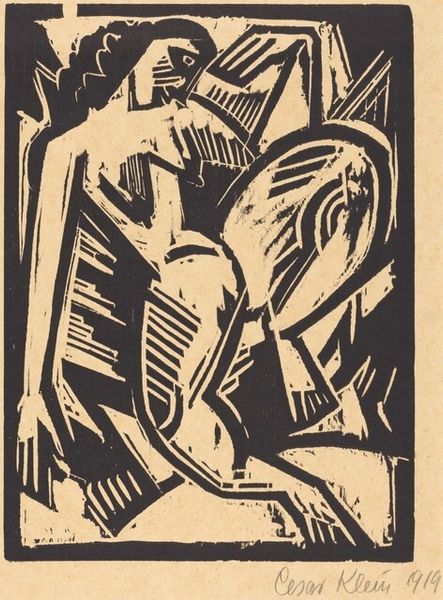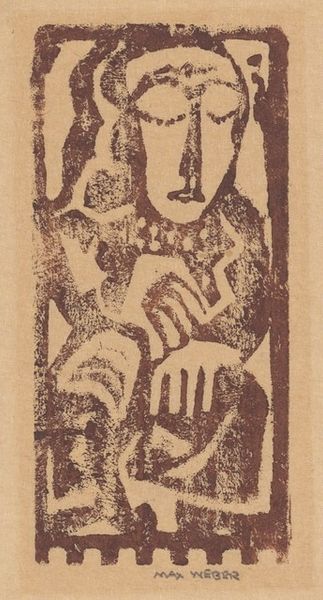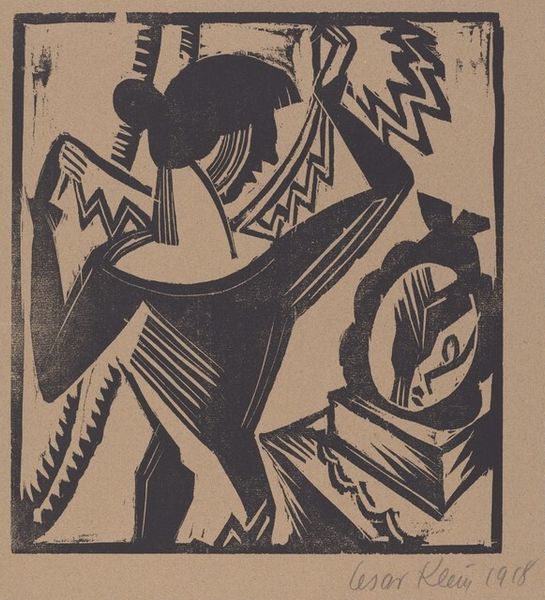
print, woodcut
# print
#
figuration
#
expressionism
#
woodcut
#
abstraction
Dimensions: image: 10.8 x 4.8 cm (4 1/4 x 1 7/8 in.) sheet: 24.8 x 15.9 cm (9 3/4 x 6 1/4 in.)
Copyright: National Gallery of Art: CC0 1.0
Max Weber made this woodcut, Dancing Figure, with dark ink on paper. The printing process gives it a graphic quality, and that really allows you to see how the artist is thinking, how he's whittling away at the image. It's all about what he chooses to leave behind, both literally on the block, and metaphorically in the picture. Woodcut is a relief process. So it is very physical, you have to carve away what you don't want to print. You can see the artist's decisions about positive and negative space. I like how the texture of the paper comes through in contrast to the printed areas. It gives the work a tactile feel, as if you could reach out and touch the surface. Look how the figure is pieced together with geometric shapes, like a puzzle or a fragmented memory. Weber was an early American Modernist, he's playing with abstraction in a way that reminds me of Picasso, but with an added layer of folk art sensibility. It feels like he's trying to capture something essential about movement and the human form, not just a literal representation. It’s a kind of translation of something real into something felt.
Comments
No comments
Be the first to comment and join the conversation on the ultimate creative platform.
